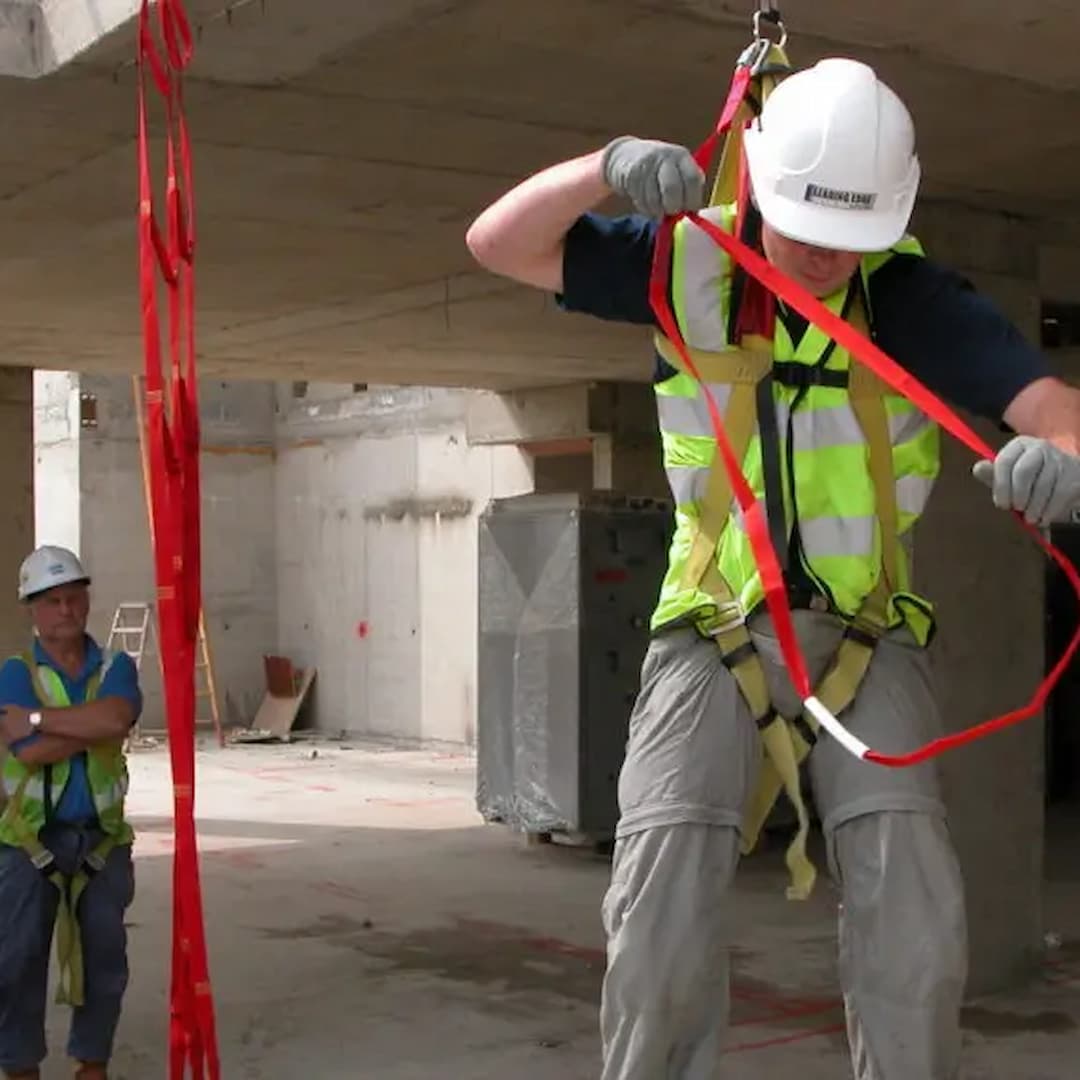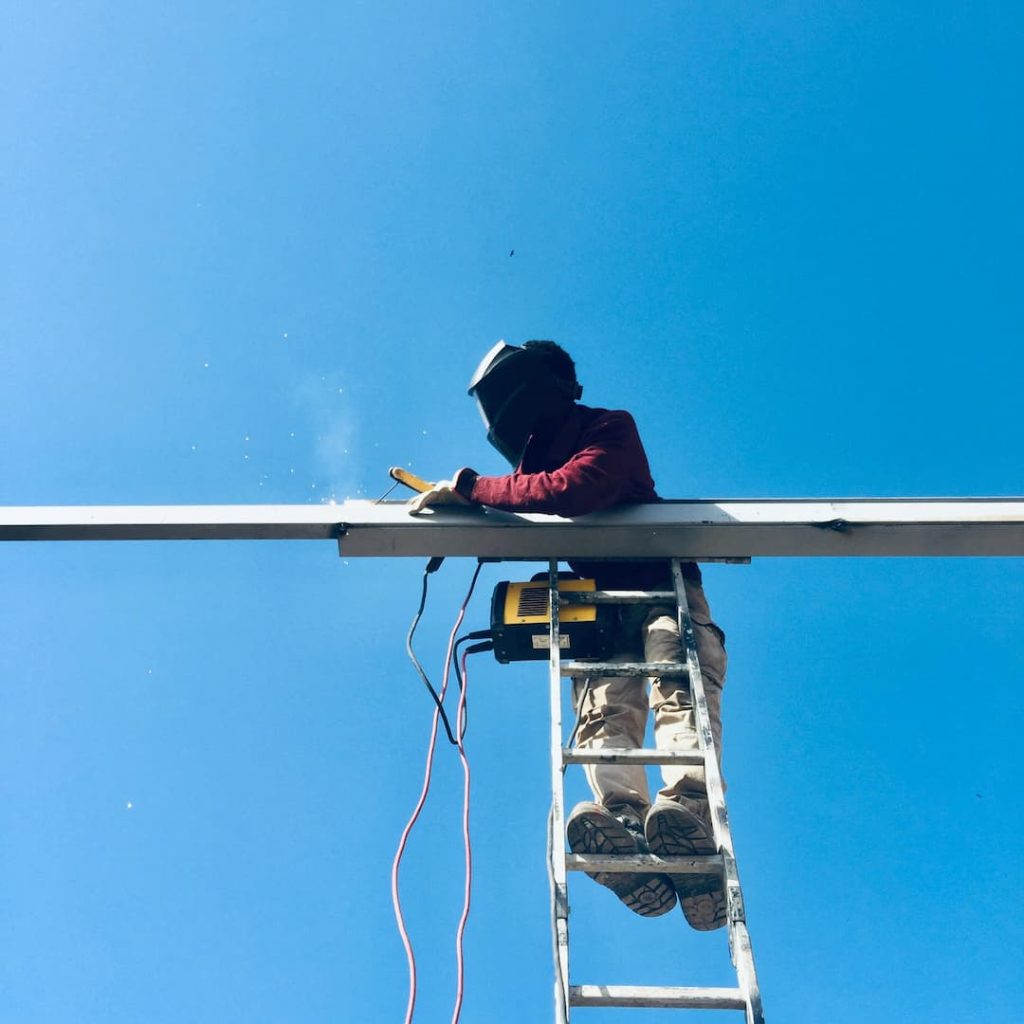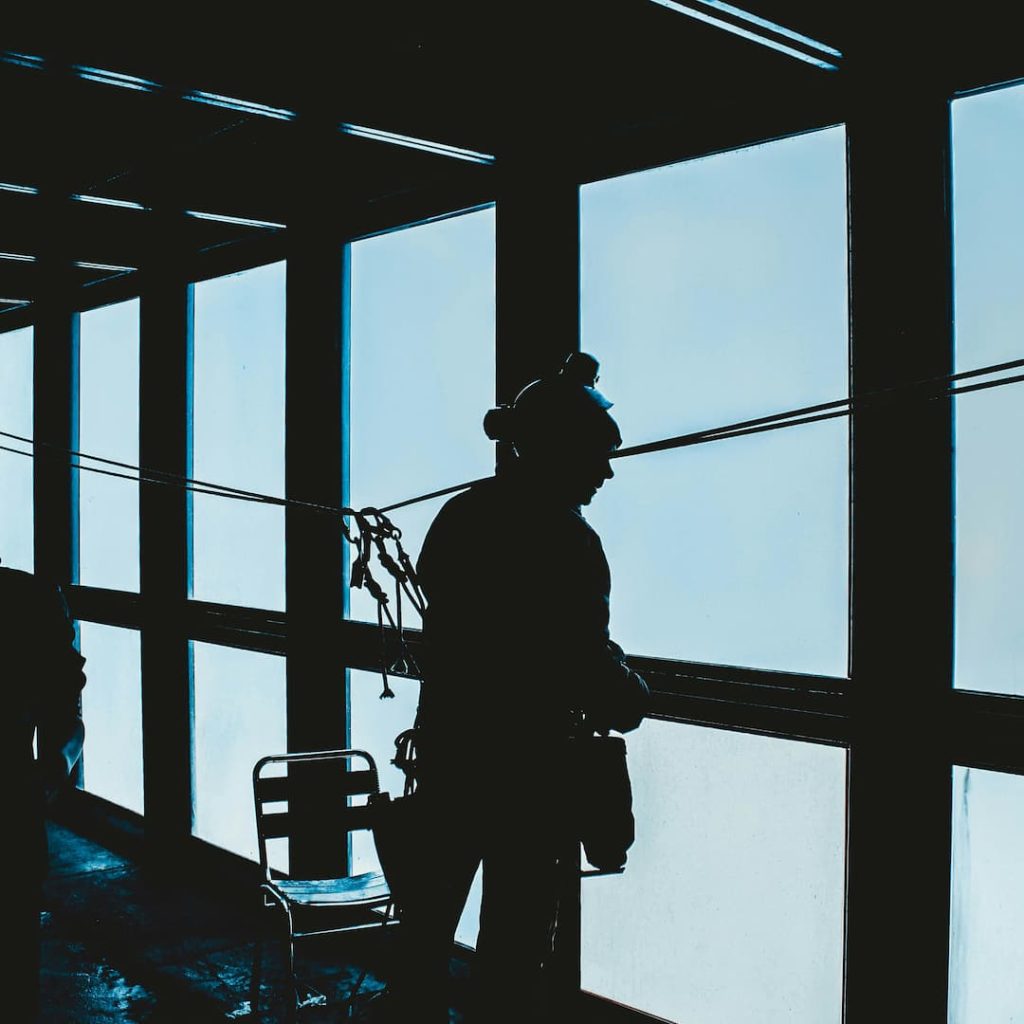
Leading Edge Safety is dedicated to making sure that employees who must work at heights can do so in a secure and safe manner. In honour of International Safe Places to Work Day that takes place on Saturday 27 July, we shine a light on a critical aspect of working at height – the importance of connectors!
Connectors are small devices that secure a worker to an anchorage point on a structure, ensuring that in case of a fall, they establish a connection between the anchorage point and the worker’s full body harness. Join us as we delve into the world of connectors, exploring their significance and ensuring correct usage to guarantee a safe and secure working environment at height.
Safety connectors, shock absorbing lanyards, self-retracting lifelines, and karabiners (sometimes known as carabiners) are essential tools used to secure workers at heights by connecting them to the anchorage point on a structure. These devices create a crucial link between the anchorage point and the worker’s full body harness in case of a fall.
When Leading Edge trainers visit work sites, they frequently discover that individuals working at heights are repeatedly making the same mistakes. Is it a minor mistake? Unfortunately not! It is one that would be catastrophic if the worker should fall. Some people think that the number one mistake for falls from height is due to a worker operating without height safety equipment. This is not the case!
The number one mistake Leading Edge trainers see is where companies have incurred the cost of providing safety equipment, however through lack of the required knowledge and training, the worker is using this equipment incorrectly. The worker may feel safe but doesn’t realise that if he or she falls, their protective equipment will fail. Misuse of height safety equipment is therefore the number 1 mistake. Below we discover some common examples of misuse witnesses on site.

Scaffold hook connectors are often placed around scaffolding resting on a horizontal member, i.e. the gate of the scaffold hook will be forced open subject to the loading that would be imposed by the horizontal member in the event of a fall. This occurs because the downward direction or loading imposed by the cross-member is across the axis of the gate on the scaffold hook and will result in complete hook failure as the hook gate will subsequently bend open, or in worst-case scenario, will explode.
This is where a site worker is supplied a lanyard, often with a small karabiner at the end. The site worker instinctively passes the lanyard around an anchor point e.g. a column or a beam, using the karabiner to choke (tighten the lanyard around the anchor point). The problem arises should the worker fall, further tightening the choked lanyard and subsequently applying a shock load inappropriately to the karabiner gate most likely causing the barrel of the karabiner connectors to fail. Karabiners are designed to accommodate tensile (pull) forces along their length and are at their weakest when the load forces are across the minor axis (width) or against the gate. It is generally accepted that to engineer a connector to withstand the directional loading across the gate of the Karabiner connectors which has been choked during a fall would require a gate strength of 5,000 lbs. Note that this dynamic loading failure across the gate of the connector applies to all styles of connectors i.e. scaffold hook, snap hook, and karabiner connectors.

As they offer a safe place to connect ropes and safety equipment, anchor points are essential to rope access and fall arrest operations. Rope access work would not be feasible without appropriate anchor points because there would be nowhere to fasten the ropes and harnesses securely.
A roof worker may instinctively connect to a handrail believing this to be a suitable fixing point. However, all temporary anchorage points must be able to withstand a 10kN Load. If in doubt the anchor point should be approved by a structural engineer.
Working at Height Leading Edge level 1 and Working at Height level 2 courses cover identifying suitable anchor points.
Scaffold hook connectors are often placed around scaffolding resting on a horizontal member. In the event of a fall, the horizontal member’s weight will force the scaffold hook’s gate open. This occurs because the downward direction or loading imposed by the cross-member is across the axis of the gate on the scaffold hook and will result in complete hook failure as the hook gate will subsequently bend open, or in worst-case scenario, will explode.
Often a lack of understanding of height safety equipment performance and its limitations can result in site workers being issued with inappropriate safety equipment. This equipment may not be suitable for its intended use and may result in devastating or even fatal consequences. It is important for a site management, foreman and stores personnel to be competent to issue the appropriate equipment for the job.
Site workers, generally through lack of training are not aware of what they can do with equipment such as connectors. It is therefore essential that both site workers and managers responsible for height safety are adequately trained to be competent to carry out their duties safely. Connector misuse is just one of 25 or more total equipment misuse areas leading edge commonly see on site. Together we can stamp out misuse and work towards a fully competent workforce free from incidents.

When it comes to choosing the right connectors for working at height, there are several important factors to consider. Based on our extensive on-site experience at Leading Edge, we have identified the following key considerations:
1. Adequate strength and load-bearing capacity: It is crucial to select connectors that can withstand the required weight and forces involved in the job.
2. Correct size: Choosing connectors of the appropriate size ensures a secure and reliable connection.
3. Ease of use: Connectors should be user-friendly and easy to operate, allowing for efficient and safe work at height.
4. Lightweight design: Opting for lightweight connectors makes them easier to carry and maneuver, reducing fatigue and improving productivity.
5. Commercial acceptability: It is important to select connectors that meet industry standards and regulations, ensuring their suitability for commercial use.
6. Proper training: It is essential for workers to receive proper training on how to use connectors and associated equipment safely and effectively.
By considering these factors, you can make informed decisions when selecting and utilising connectors for working at height, promoting safety and efficiency in your operations.
On International Safe Places to Work Day, we have highlighted the crucial role that connectors play in height safety for leading-edge experts. By emphasizing the importance of using connectors correctly, we reinforce the foundation of a safe and secure working environment at heights. Remember, the attention to detail in utilising connectors is not just a safety measure; it is a commitment to prioritising the well-being of workers and upholding the highest standards of safety in the industry.Stay safe, stay connected, and strive for excellence in height safety practices.On International Safe Places to Work Day, we have highlighted the crucial role that connectors play in height safety for leading-edge experts. By emphasizing the importance of using connectors correctly, we reinforce the foundation of a safe and secure working environment at heights. Remember, the attention to detail in utilising connectors is not just a safety measure; it is a commitment to prioritising the well-being of workers and upholding the highest standards of safety in the industry.
Let us continue to advocate for safe practices, proper equipment usage, and ongoing education to ensure that every individual working at height can return home safely at the end of the day.
Stay safe, stay connected, and strive for excellence in height safety practices.
Copyright 2025 Leading Edge Safety. Devloped by Czargroup Technologies